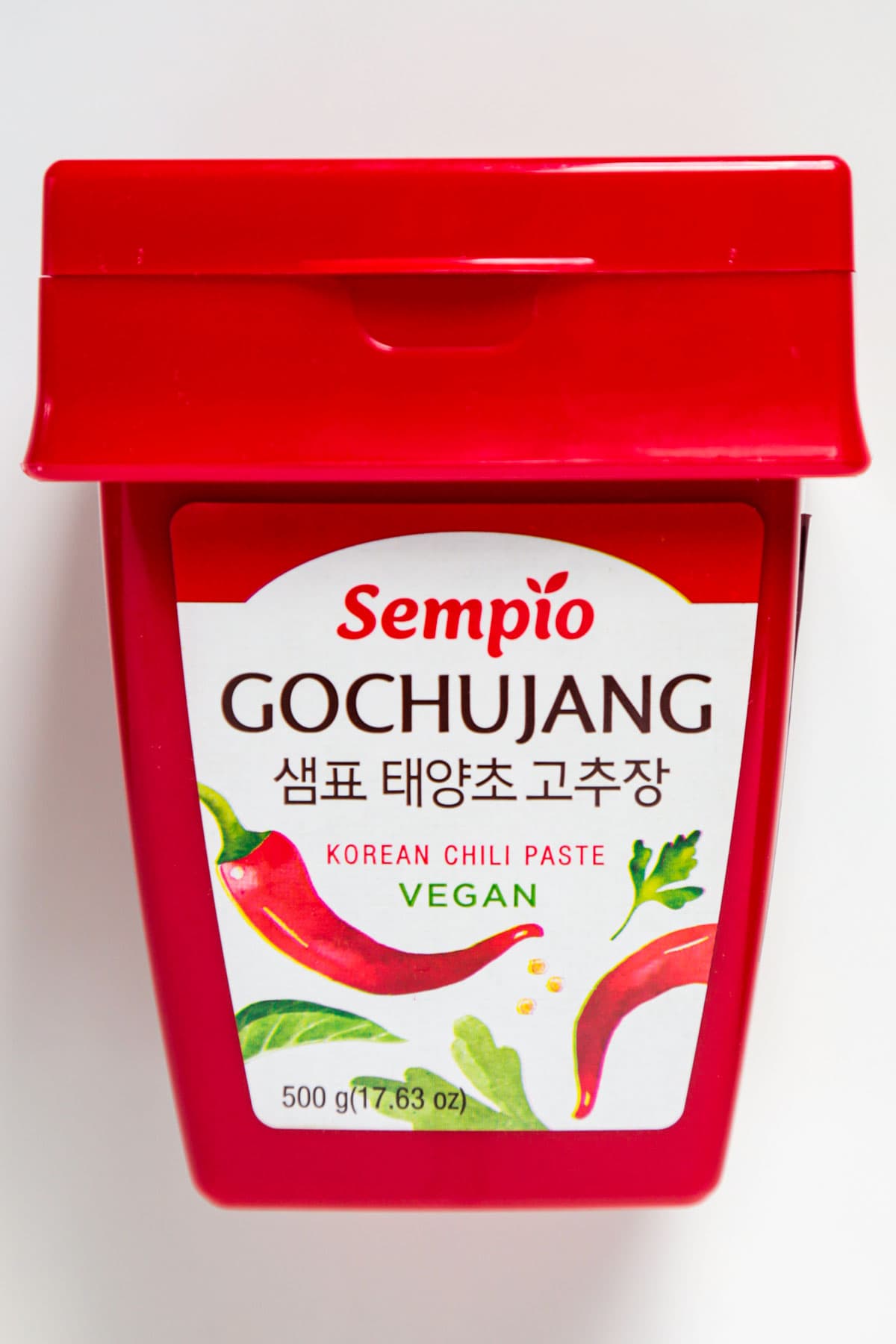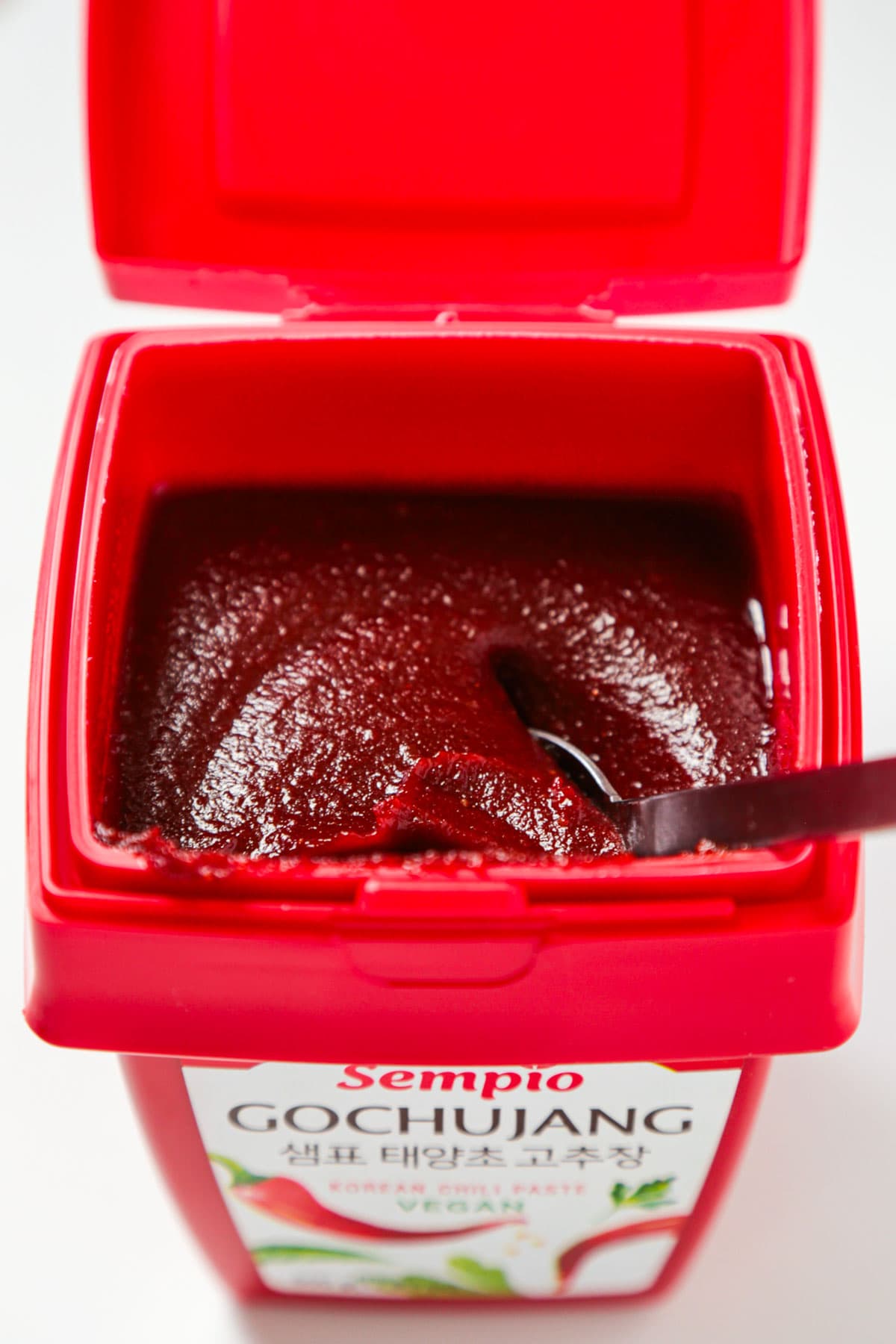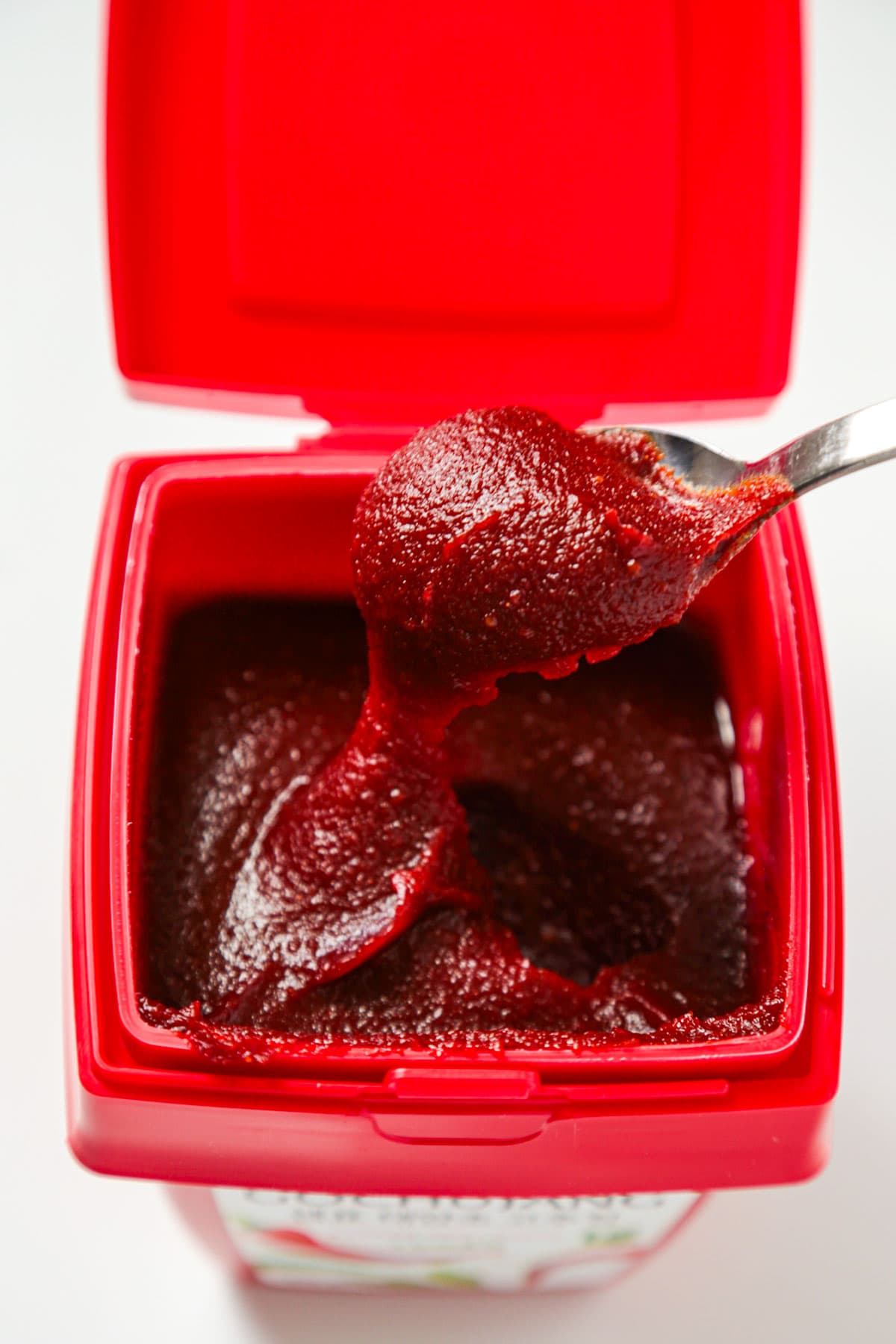Let’s learn about gochujang! It’s the funky, spicy and sweet Korean red chili paste that imparts so much flavor to our all-time favorites like bulgogi and tteokbokki. A must-have addition to your pantry!

Table of contents
What is gochujang?
Gochujang 고추장 is a Korean red chili paste made from fermented soybean, chili powder, glutinous rice, malt powder, and salt. The spicy, savory and sweet flavor profile is a staple in Korean cooking. It’s often used in soups, stews, and salads, and is also used for pickling and marinating.
Do you like bibimbap? Well, the red sauce you stir into your stone pot of crispy rice, veggies and bulgogi is typically loaded with gochujang.
Not only is it a condiment used to give depth of flavor and a kick to your tteokbokki (spicy Korean rice cakes), some might call it the backbone of the Korean palate.
But to really understand the complexity of flavors present in this wonderful Korean chili paste, let’s take a look at one of the the star ingredients in gochujang: gochugaru.

How to use gochujang
Gochujang is used to enhance any dish that needs a hit of smoky, sweet heat. And, aside from its common uses in the Korean food lexicon, I even use it in non-Korean dishes like this vegan mapo tofu recipe.
However, it’s not really a finishing sauce like tabasco or sriracha. Since gochujang is so thick, it’s typically used in tandem with other liquid ingredients and used as a flavoring marinade.
You can always mix it with items like soy sauce, sake, sugar, broth, and other common ingredients used in Asian cooking to create a sauce or marinade with such a complex flavor profile that it almost seems like magic.
Since gochujang can be quite spicy (many brands have varying levels of spice – so check the container!), it’s always advisable to use a little at first and work your way up from there.
Recipes using gochujang
- Tteokbokki
- Chicken Bulgogi
- Vegetable Bibimbap
- Korean Spicy Chilled Noodles
- Homemade Ssamjang (Korean Dipping Sauce)

Where to buy gochujang
It has never ben a better time to find ingredients in our corner grocery stores that were considered extremely exotic only a few short years ago. Many Western grocery stores stock gochujang in the Asian ingredients sections of its aisles these days.
And, of course, you’ll have no trouble at all tracking down this funky red pepper paste at most Asian food shops.
You can also order gochujang on Amazon. Since it is shelf stable until opened, there’s no worry of it going bad in transit.
Gochujang Substitute
While I will say that nothing quite hits the perfect balance of flavors gochujang naturally possesses, it’s not impossible to craft a workable substitute in a pinch.
Miso paste has many of the fermented, savory and umami qualities you’ll find in gochujang. If you’ve got miso paste handy, you can mix it with items like sake, sugar (or maple syrup) and Korean red chili pepper flakes to approximate the taste.
Storage
Gochujang typically comes in a resealable plastic container. Once opened it should be refrigerated. To prevent the paste from drying out too quickly, place a piece of plastic wrap between the lid and the container for an even better seal. Or keep gochujang in an airtight Tupperware container.
It will keep for a very long time, until the color darkens or texture hardens considerably.
While it’s always best to follow the use-by-date on condiments and sauces, I’ve found that gochujang fares quite well provided that it’s covered and refrigerated. Advice from manufacturers ranges from three months to two years.














